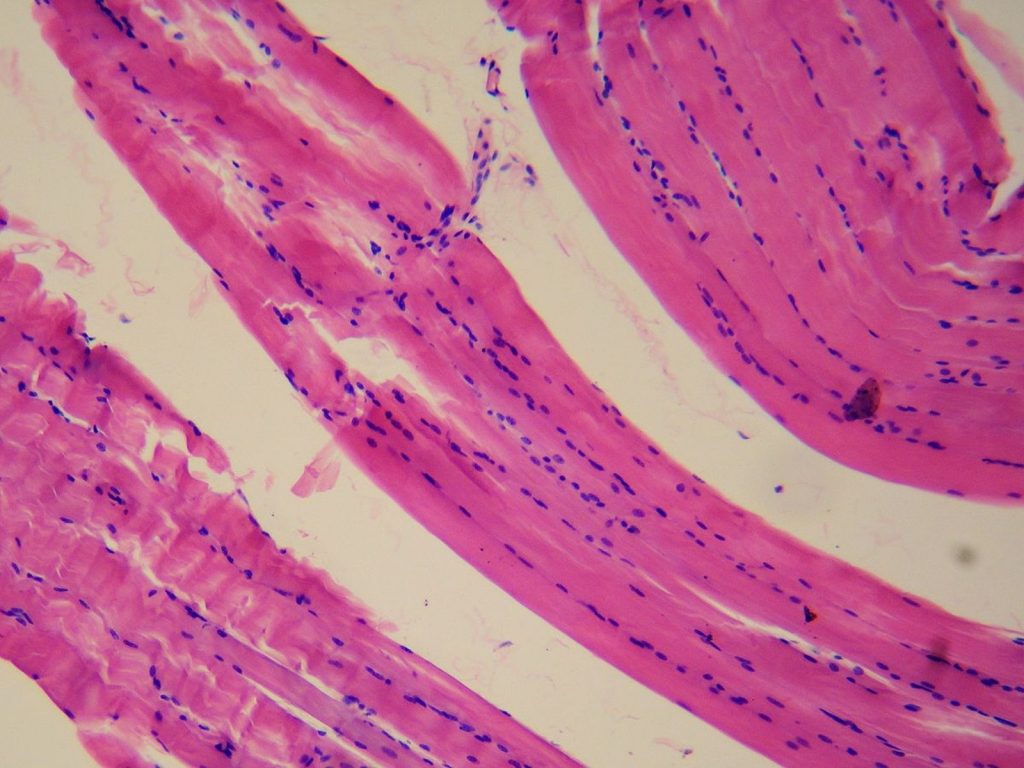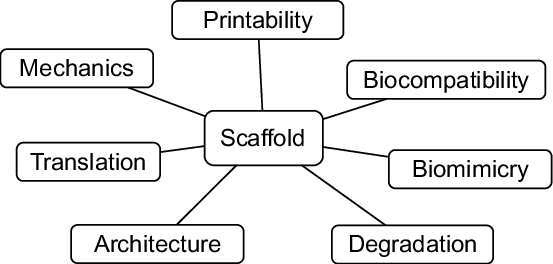I am glad to be running this series thus far. It seems that people are very interested with the subject matter, and I myself have learned even more as well. The series has discussed various technologies within bioprinting. We have also discussed a variety of bioprinting materials. We have barely even scratched the surface on topics we can talk about. In this article we are going to look into tissue engineering and regenerative medicine applications of 3D bioprinting.
Let us first define our terms of interest. Tissue engineering is the use of a combination of cells, engineering and materials methods, and suitable biochemical and physiochemical factors to improve or replace biological tissues. Tissue engineering involves the use of a tissue scaffolds for the formation of new viable tissue for a medical purpose. We have talked about the use of bioprinting scaffolds in order to create tissue layers for organs and other parts of the body. One must understand that as a bioengineer, most of the techniques used to create tissue is based on biomimicry. Biomimicry refers to the design and production of materials, structures, and systems that are modeled on biological entities and processes. We are limited in our scope due to the fact that biology is a complex system and it is difficult to mimic natural and living processes. 3D bioprinting is a tool that expedites biomimicry and allows us to create rapidly with synthetic resources.
What is needed to create a scaffold for tissue engineering purposes
Regenerative medicine and tissue engineering go hand in hand. We are looking to build materials that may have innate regenerative properties within our bodies. This is a process that is essential to living organisms – the ability to repair oneself after damage or trauma. Regenerative medicine is a branch of translational research in tissue engineering and molecular biology which deals with the “process of replacing, engineering or regenerating human cells, tissues or organs to restore or establish normal function”. Extracellular matrix materials are commercially available and are used in reconstructive surgery, treatment of chronic wounds, and some orthopedic surgeries. This is the future of medical care in many ways. Our understanding of the ECM and bioprinting is evolving, and technology is continuously improving. The future of ECM biomaterials in tissue engineering and regenerative medicine applications is promising. Progress in decellularization techniques and optimization of recellularization strategies will improve various aspects of an ECM scaffold and its ability to be regenerative. These traits include biocompatibility, endothelialization, and functional anastomosis into the host vasculature.
Regenerative Medicine and 3D bioprinting
Endothelialization refers to the creation of endothelial tissue. Endothelial tissue refers to the tissue the layer of cells lining the inside of blood and lymph vessels, of the heart, and of some other closed cavities. Anastomosis a cross-connection between adjacent channels, tubes, fibers, or other parts of a network. These are major concerns when it comes to tissue engineering and regenerative medicine due to how we need to understand the need for biomimicry. We have to realize that it takes an absurd amount of precision to even build systems that replicate the inner structure of a vascular tissue layer. Then we have to think about how this will be self healing as well. This does not deter the development of this technology though as more people are intrigued by this subject matter on a daily basis.
3D bioprinting is an amazing step in the right direction, and there are companies, universities, and startups who are trying to be on the cutting edge of this field. The wealth of knowledge being created in this field is immense and frankly would intimidate people who are not aware of how vast the field is.
Now I believe the way for us to really delve deep within this series from now on is to start interviewing the leaders within this field. Due diligence will be done for the public to get more in depth understanding from industry experts. It is important to interview a variety of people within this field as no one necessarily is a specialist in this field. There seems to be a lot of cross pollination and multi skilled individuals. It makes for a wide variety of knowledge to be learned within the field of biology, synthetic biology, biomimicry, biophysics, chemistry, biochemistry, biomaterials, material science, biomedical fields, and a bunch of other fields I have not had a chance to mention. I personally believe that the revolution of bioprinting is a bit early. There is just so much development from different places. It is difficult to see the best methods at the moment. I will try to interview others to gain more insight and build a repertoire of knowledge for all readers.
This article is part of a series that wishes to make bioprinting more accessible. It starts with bioprinting 101, Hydrogels, 3D Industrial Bioprinters, Alginate, Bioinks, Pluronics, Applications, Gelatin, and Decellularized Extracellular Matrices.
Subscribe to Our Email Newsletter
Stay up-to-date on all the latest news from the 3D printing industry and receive information and offers from third party vendors.
Print Services
Upload your 3D Models and get them printed quickly and efficiently.
You May Also Like
3D Printing News Briefs, July 2, 2025: Copper Alloys, Defense Manufacturing, & More
We’re starting off with metals in today’s 3D Printing News Briefs, as Farsoon has unveiled a large-scale AM solution for copper alloys, and Meltio used its wire-laser metal solution to...
3DPOD 260: John Hart on VulcanForms, MIT, Desktop Metal and More
John Hart is a Professor at MIT; he´s also the director of the Laboratory for Manufacturing and Productivity as well as the director of the Center for Advanced Production Technologies....
3D Printing News Briefs, June 28, 2025: Defense Accelerator, Surgical Models, & More
In this weekend’s 3D Printing News Briefs, 3YOURMIND was selected to join an EU Defense Accelerator, and PTC has announced model-based definition (MBD) capabilities within Onshape. Finally, a study out...
EOS in India: AM’s Rising Star
EOS is doubling down on India. With a growing base of aerospace startups, new government policies, and a massive engineering workforce, India is quickly becoming one of the most important...




































